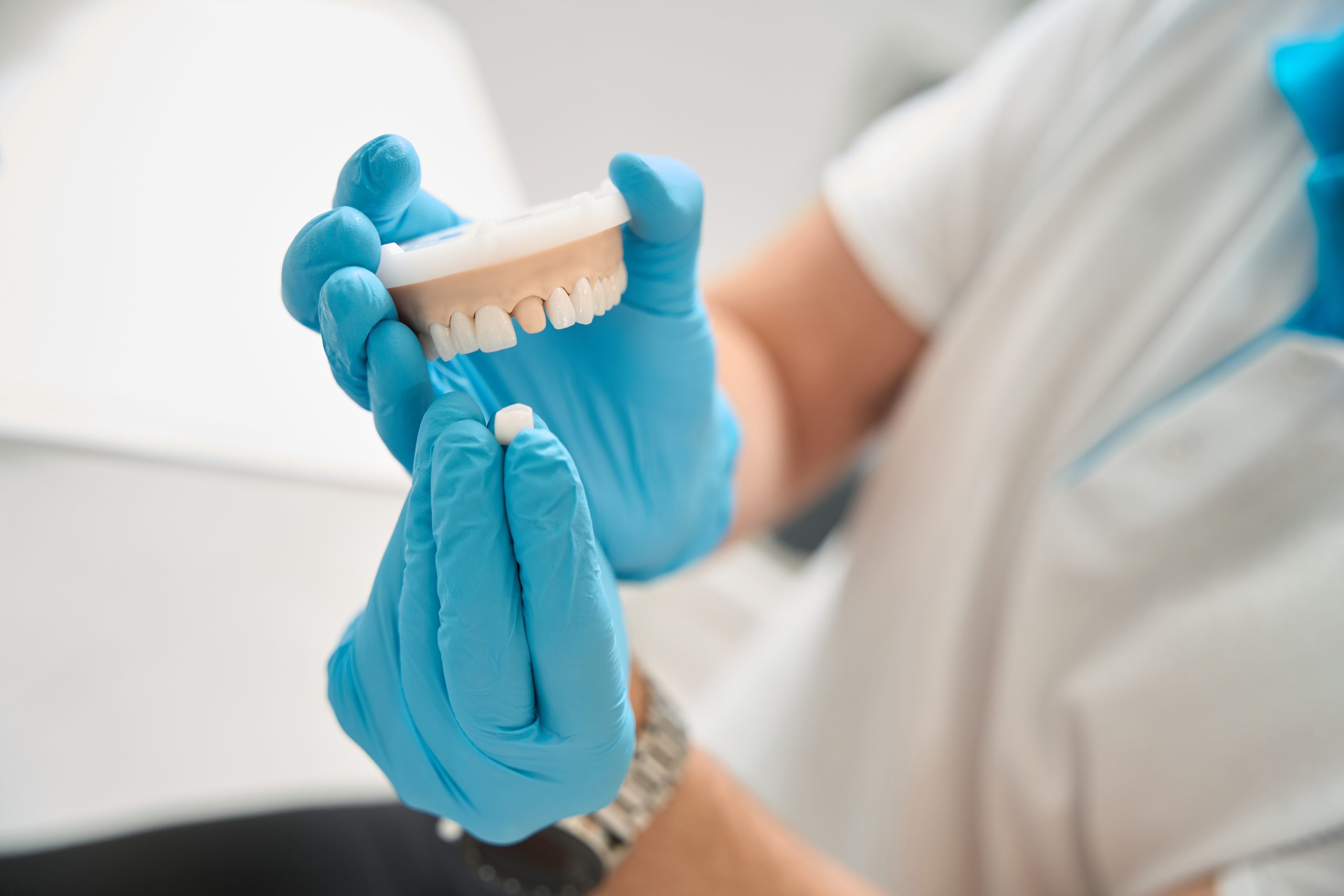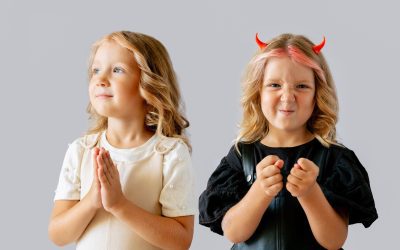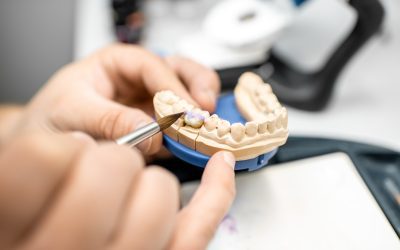Dental crowns are crucial in maintaining and restoring oral health. But why would a dentist recommend a crown? There are a variety of reasons to recommend these tooth-shaped coverings, which are designed to fit snugly over a damaged or decayed tooth, fully encasing it to provide protection and restore functionality. Understanding when and why a dental crown may be necessary is essential for anyone seeking to preserve their oral health.
Understanding Dental Crowns
A dental crown is essentially a custom-made cap to cover a damaged or weakened tooth, providing strength, protection, and stability. The primary purposes of dental crowns are saving weakened teeth, reinforcing existing tooth structure after root canal treatment, or simply improving the appearance of teeth.
Everyday situations that warrant the use of a dental crown include:
- Protection from the breakdown of a weak tooth.
- Holding parts of a cracked tooth together.
- Covering severely misshapen or discolored teeth.
- Covering a tooth after root canal therapy.
- Serving a cosmetic purpose or in conjunction with dental implants.
Various materials are available for dental crowns, each offering unique benefits and considerations. Common materials include metal, porcelain, resin, gold, ceramic, zirconia, and all-ceramic crowns. The choice of material often depends on factors like the patient's preference, tooth location, and the desired appearance.
The type of dental crown, as well as the cost and procedure, can vary depending on several factors, such as materials used, location, and individual patient needs.
When and Why Would a Dentist Recommend a Crown?
Dentists often recommend a dental crown in various situations to protect and preserve the integrity of a tooth. One of the primary reasons a dentist would suggest a dental crown is to protect a weak tooth from breaking. This can occur when a tooth is suffering from decay or has undergone a root canal procedure. After a root canal, the tooth structure may be compromised, and a crown can serve to strengthen and cover the tooth, preventing further damage.
In some cases, a tooth may have a large filling, which can weaken the overall structure of the tooth. In such instances, a dental crown may be employed to provide support and reinforcement to the tooth. A cracked or broken tooth can also benefit from a dental crown, as it can hold the parts of the tooth together and restore its functionality.
Dental crowns are also useful for aesthetic purposes. Discolored or severely stained teeth that cannot be improved by conventional teeth whitening methods may require a crown to restore their appearance. A dental crown can be color-coordinated to the patient's natural teeth color, creating a discrete and attractive look.
In addition to addressing issues with natural teeth, dental crowns can also be used alongside dental implants. When a tooth is missing or extracted, a dental implant can be used as an alternative to the tooth's root. Once the implant is securely integrated with the jawbone, a dental crown is placed on top of the implant, completing the restoration process.
Types of Dental Crowns
There are a variety of types of dental crowns available, each with its own set of advantages and drawbacks. This section will discuss the most common types of dental crowns.
- Metal Crowns are often made from alloys containing gold, palladium, nickel, or chromium. They are known for their strength and durability, making them suitable for back teeth that withstand chewing force. However, while their metallic appearance may not be aesthetically pleasing to some, they are highly resistant to wear and corrosion.
- Porcelain Crowns offer a more natural appearance as they can closely match the color of a patient's teeth. They tend to be a popular choice for front teeth since they blend well with the surrounding teeth. However, porcelain crowns may not be as strong as metal crowns and can be prone to chipping over time.
- Porcelain-fused-to-metal (PFM) Crowns fuse the strength of metal crowns with the aesthetic appeal of porcelain crowns. The base is made of metal, providing strength and durability, while the outer layer is made of porcelain, giving the crown a natural appearance. While PFM crowns are a popular choice, the metal base may sometimes be visible near the gum line, causing a slightly unnatural look.
- Gold Crowns are comprised of gold alloy and offer excellent durability, making them suitable for patients who require strong and long-lasting crowns. Gold crowns are also gentle on the opposing teeth, making them a good option for those with teeth-grinding habits. However, the gold color makes them less desirable for visible front teeth.
- Resin Crowns are made of shapeable composite material that can be stained to match a patient's natural teeth color. They are generally less expensive than other types of crowns. Still, they lack the durability of their metal and ceramic counterparts, making them prone to wear and fracture and ultimately needing to be replaced more frequently.
- Ceramic Crowns are similar to porcelain crowns in appearance, but they are made from a more robust and more durable ceramic material. This material makes them ideal for patients who want a natural-looking crown that can withstand daily wear and tear.
- Stainless Steel Crowns are widely used as a temporary measure during dental procedures, such as on children's teeth that will eventually be replaced with permanent adult teeth. They are a cost-effective option and are generally only used for a short period of time.
- Zirconia Crowns are made from a type of high-performance ceramic and offer a combination of strength, durability, and excellent aesthetics. This type of crown can be designed and created in a dental office using advanced technology, making it possible to provide same-day crowns for patients. They are popular for patients seeking a balance between aesthetics and longevity.
- Same-day Crowns are mostly made of zirconia or ceramic materials. As the name suggests, they can be designed, created, and placed all in a single day using advanced dental technology like computer-aided design and computer-aided manufacturing (CAD/CAM). This type of crown offers patients the convenience of not having to wait for a lab to fabricate the crown, reducing the need for multiple dental visits.
The Dental Crown Procedure
The dental crown procedure is a routine treatment dentists recommend to protect and restore teeth. In this process, a tooth-shaped cap is placed over the tooth to improve its appearance, shape, and strength. The procedure involves several steps, which we have briefly outlined below.
First, the dentist administers a local anesthetic to numb the area around the tooth. This step helps to ensure the patient feels comfortable and experiences minimal pain during the procedure. Once the area is numb, the dentist begins shaping the tooth to create a proper base for the crown. This shaping may include removing any decay or damaged areas and building up the tooth if necessary.
Next, the dentist takes dental impressions of the shaped tooth and the surrounding teeth. This can be done with a soft putty material or a digital scanner. These are then sent to a dental laboratory, where a technician uses them to create a custom-made mold for the permanent crown. While waiting for the permanent crown's creation, the dentist positions a temporary crown over the prepared tooth. This temporary crown provides protection and maintains the tooth's appearance until the permanent crown is ready.
Once the permanent crown is completed, the patient returns to the dentist for the final stage of the procedure. The dentist carefully removes the temporary crown and cleans the tooth. The permanent crown is then tried on the tooth to ensure the correct fit and appearance. If needed, the dentist makes adjustments to the crown's shape or color. Once both the patient and dentist are satisfied, the crown is cemented into place.
Overall, the dental crown procedure is a safe and effective way to protect and restore teeth, helping to maintain a healthy and attractive smile.
Caring for Your Dental Crown
Maintaining the health and longevity of dental crowns requires proper oral hygiene. Practicing good oral hygiene habits can prevent complications and ensure that the crown serves its purpose for many years.
It is important to brush your teeth at least twice a day using a fluoride toothpaste. Fluoride toothpaste strengthens the tooth enamel and helps in preventing tooth decay and gum disease. When brushing, pay special attention to the area where the crown meets the gum line, as this area is more susceptible to the accumulation of plaque.
Flossing should also be a part of daily oral hygiene practices. Flossing removes food particles and plaque trapped between teeth and under the gum line, preventing the development of gum disease. It is essential to floss gently around the dental crown to avoid dislodging it or causing damage.
In addition to daily brushing and flossing, using an antimicrobial mouthwash can improve oral hygiene by reducing bacteria in the mouth. This helps in preventing gum disease and promoting overall oral health.
Regular 6-month dental checkups and cleanings are crucial for maintaining both the dental crown and natural teeth. During these visits, the dentist can keep an eye on the health of the crown and the surrounding teeth and gums, addressing any issues that may arise.
By adopting these oral hygiene practices, individuals with dental crowns can maintain a healthy and functional smile, prolonging the life of their dental crown and preventing additional dental issues.

Advantages and Disadvantages of Dental Crowns
Dental crowns are a common treatment option that dentists recommend for various reasons, such as tooth restoration, fracture prevention, and aesthetic improvements. Though dental crowns offer numerous benefits, they also come with some disadvantages.
One of the key advantages of dental crowns is their ability to provide strength and durability to weakened or damaged teeth. By covering the tooth, a crown restores its function and offers long-term protection from further damage. Dental crowns can prevent tooth fractures and support dental bridges, crucial for maintaining oral health.
Another advantage of dental crowns is their ability to improve the appearance of teeth, giving patients a more confident and natural-looking smile. Crowns can be tailored to match the size, shape, and color of the surrounding teeth, providing a seamless appearance. This customization helps patients achieve a natural appearance, boosting their self-esteem and comfort with their smile.
However, dental crowns also have some disadvantages. One potential drawback is the risk of allergic reactions to the crown material. While these reactions are relatively rare, some patients may be sensitive to metals or other materials used in crowns. It is essential to discuss any known allergies with a dentist before proceeding with a dental crown.
Another disadvantage of dental crowns is that tooth sensitivity could occur. This sensitivity is commonly experienced after crown placement, especially when eating foods or drinking beverages that are hot or cold. While this sensitivity typically subsides over time, it may persist for some individuals.
Alternatives to Dental Crowns
Dental crowns are often recommended by dentists to protect and strengthen a damaged tooth. However, there are several alternative treatments that can also be considered, depending on the patient's specific needs and preferences.
One common alternative to dental crowns is a dental bridge. A dental bridge involves placing a false tooth, called a pontic, in the space where a tooth is missing. The pontic is supported by neighboring teeth that have been fitted with crowns, effectively bridging the gap and restoring function and appearance. Dental bridges can be used when a tooth is too damaged for a crown but not suitable for extraction.
Another alternative is a filling. Dentists are able to use fillings to repair a tooth with minor to moderate damage, such as a small cavity or a crack. Fillings are made of different materials, including amalgam, composite resin, and porcelain. While they may not provide the same level of strength as a crown, they are less intrusive and preserve more of the natural tooth structure.
Dental implants are also an option for those looking to replace a missing or severely damaged tooth. A dental implant works by placing a titanium screw into the jawbone, which then fuses with the bone through a process called osseointegration. Once the implant is stable, an abutment and a crown are attached to create a natural-looking, durable tooth replacement. Dental implants can be a more permanent and stable solution than dental bridges and crowns.
Root canal treatment may be advisable if the tooth has an infected or inflamed pulp – the soft tissue inside the tooth's roots. A root canal procedure involves the dentist cleaning and shaping the tooth's root canals before filling them with a biocompatible material. This treatment can help save a severely damaged tooth and may be followed by the placement of a crown for added strength and protection.
Incorporating these various treatment options provides patients with a variety of choices when it comes to preserving their dental health. Dentists will typically consider the patient's specific situation, preferences, and clinical factors before suggesting the most appropriate treatment plan.

Understanding Dental Crown Costs
When considering dental crowns as a dental treatment, it's imperative to understand the various factors that can influence the cost. This includes factors such as the type of material used, the dentist's fees, and dental insurance coverage.
The average dental crown cost ranges from $500 to $3,000, depending on the type of material used and the specific dental practice's fees.
Dental insurance can significantly impact the out-of-pocket cost for a dental crown. Many dental insurance plans cover a portion or the full cost of crowns, depending on the plan's specific structure and benefits. Reviewing your dental insurance coverage to determine any copayments, deductibles, or maximum limits that could affect your crown's final cost is essential.
Another factor to consider when evaluating the cost of a dental crown is its lifespan. Dental crowns are generally durable and long-lasting, with an average length of usage of 10 to 15 years. However, proper care and maintenance can extend their lifespan, making them a worthwhile investment for protecting your teeth. Regular dental checkups and cleanings, avoiding hard foods, and practicing good oral hygiene can help maximize your dental crown's lifespan.
In conclusion, Dental crowns protect and restore weakened or damaged teeth for better oral health.
Common reasons for dental crown recommendations include large fillings, root canal treatments, and cosmetic improvements. Dental crown types, costs, and procedures can vary based on materials, patient needs, and location.
Frequently Asked Questions
What factors determine the need for a crown?
Dentists may recommend a dental crown in various situations. The primary factors include a tooth with a large filling that exceeds the natural tooth structure, following root canal therapy, a combination of root canal therapy and large filling, or for cosmetic reasons.
How does a crown procedure differ from a filling?
While both dental crowns and fillings serve to repair damaged teeth, they have different applications. Fillings are used to repair smaller cavities and restore the tooth structure. Dental crowns, on the other hand, are caps placed over the entire tooth, serving to restore the tooth's shape, size, strength, and appearance.
What are the types of dental crowns available?
There are various material options when it comes to dental crown construction, including ceramic, porcelain, metal, zirconia, resin, or a combination of materials. The material choice depends on factors like the location of the tooth, the patient's preferences, and the dentist's recommendation.
Do dental crowns require special care?
Dental crowns do not typically require special care beyond regular oral hygiene practices. Brushing and flossing every day, plus regular dental checkups and cleanings, are sufficient to maintain the crown and overall oral health.
How long does the crown placement process take?
The placement of a dental crown generally takes two separate appointments, spaced about two weeks apart. The first step involves getting the tooth prepared for the crown, while the second consists of cementing the custom-made crown onto the prepared tooth.
Are there alternatives to dental crowns?
Alternatives to dental crowns may be suitable in some cases, depending on the reason for the crown. Potential alternatives include dental veneers, dental fillings, or inlays and onlays. However, dental crowns are often recommended when extensive tooth restoration is necessary.




